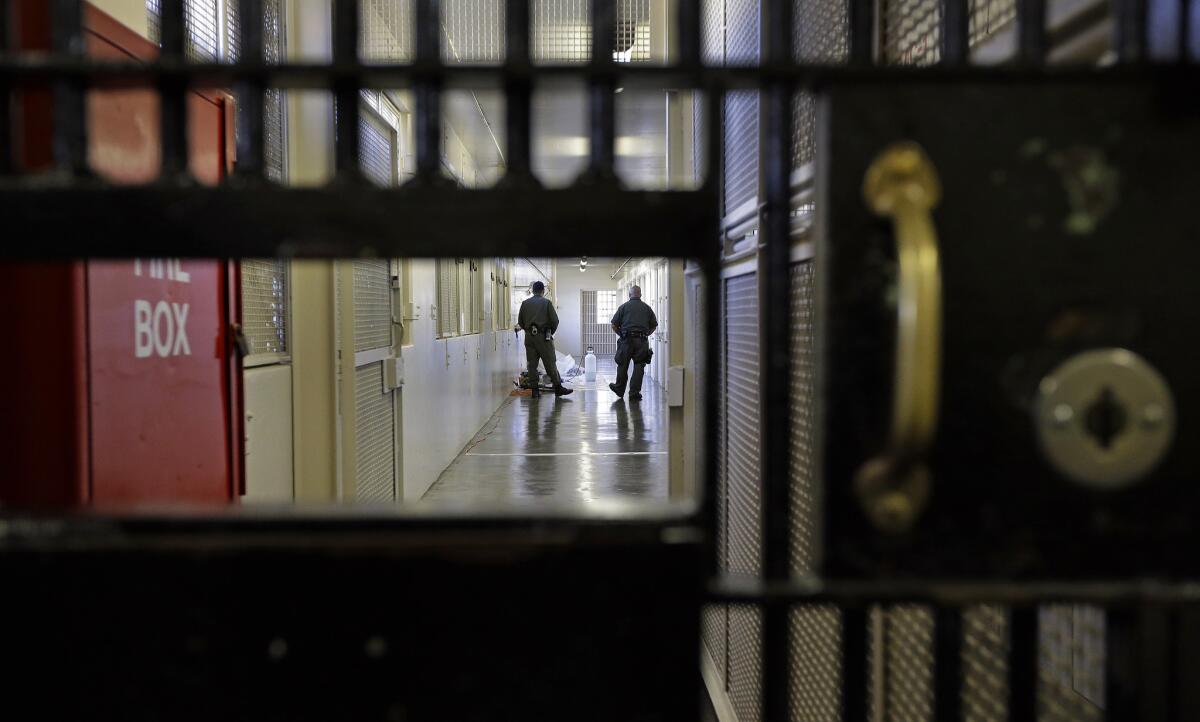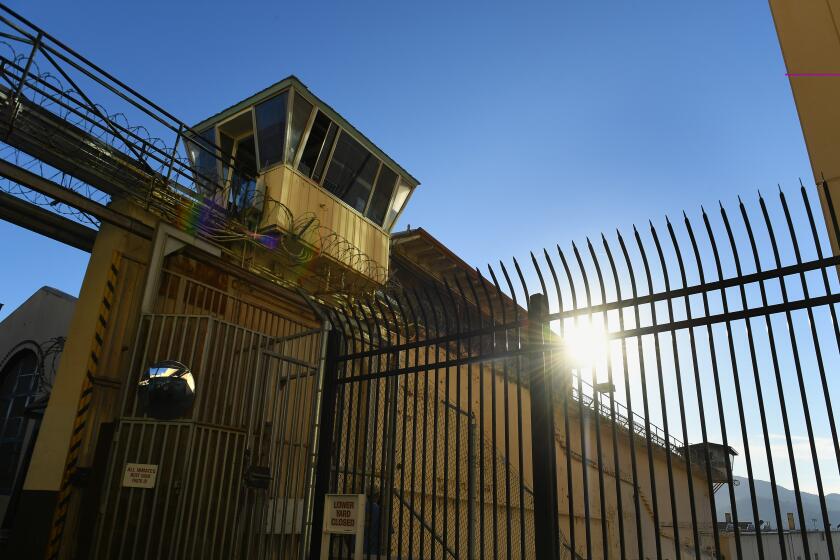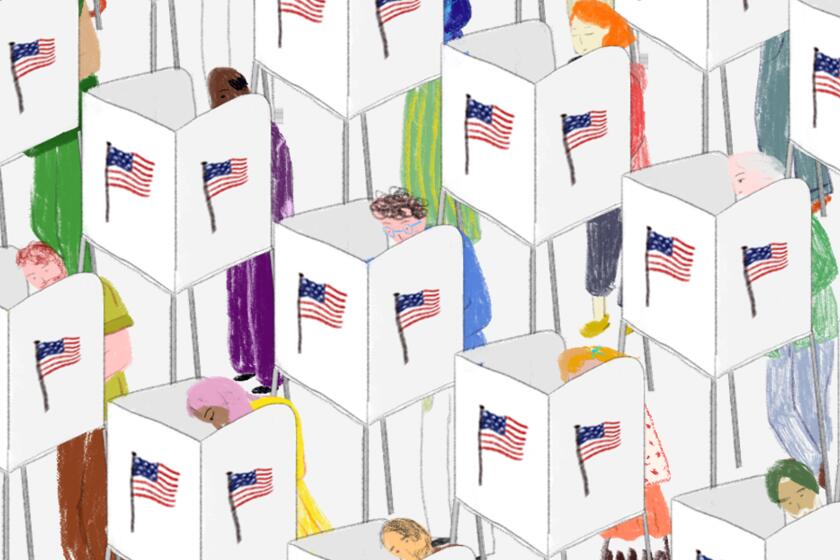Editorial: California’s prison spending is out of whack

Prison guards walk down a corridor in San Quentin State Prison in San Quentin, Calif. on Dec. 29.
Where is the de-incarceration dividend? With crime up, Californians have a right to ask why the savings from prison realignment haven’t materialized and why an expected $100 million to $200 million in Proposition 47 savings has been budgeted by Gov. Jerry Brown at less than $30 million.
After all, the state’s prison population has plunged, first from realignment — the 2011 shift in responsibility for many felons from the state to counties — then from inmate releases to meet court-imposed prison population caps and deadlines, and then from Proposition 47, the 2014 ballot measure to reduce drug possession and some other felonies to misdemeanors and therefore reduce the need for prison and jail space. State prisons house about 30,000 fewer people than they did just four years ago.
In the last four years, per capita prison costs have jumped from $49,000 to $64,000 annually. How can that be?
As inmate populations have dropped, surely so have costs. Where are those billions of dollars in savings, and where are those reentry programs that all that money was supposed to pay for — to provide mental health services, addiction treatment, job training, cognitive behavioral therapy and other interventions that are meant to reduce the chance of addicts and other offenders returning to their old ways and committing the kinds of crimes that, it seems, are now on the rise?
State officials say it’s complicated. OK, but it’s not that complicated.
Somehow, California’s prison costs have kept going up even while inmate numbers have dropped. As laid out in a Jan. 6 Reuters story, the prison population is now about what it was 20 years ago, but in that time per-inmate costs have tripled. Just in the last four years, per capita prison costs have jumped from $49,000 to $64,000 annually. How can that be?
The official explanations carry varying degrees of plausibility. The state is still paying on contracts to house inmates out of state. It is costing a lot to upgrade prison medical conditions, which had fallen so far below constitutional standards that a federal court took oversight in 2005 and has still not relinquished it, except at one of the state’s 34 prisons. There are also new costs to cover the recidivism reduction programs that the California Department of Corrections and Rehabilitation scrapped years ago when classrooms and all other available space were crowded with bunks but that have now started again as space has been freed up.
But that doesn’t explain why the department’s payroll is about the same as it was when the prisons housed tens of thousands more people.
The governor might argue that a little more patience is in order, and that might have sufficed — until this week, when he released a budget showing just a fraction of the anti-recidivism, victim services and education money that voters demanded when they overwhelmingly adopted Proposition 47 in November 2014.
The ballot measure keeps even more people out of prison and calls for most of the resulting savings to go to counties with valid programs to keep people from turning or returning to crime. Local governments were already complaining that they had to wait until this August for the money. Still, they had estimates that more than $100 million would come in this year. They didn’t count on Brown being so creative with his definition of the word “savings,” and keeping much of the money — far too much of it (all but $29.3 million) — in the prison system.
California has been down this road before. In the 1970s, the state closed mental hospitals on the promise of huge savings, much of which were to be spent on community-based clinical care. But state budgets almost magically soaked up the savings elsewhere, and with little clinic space available, thousands of former patients gravitated to the streets, the jails and the morgues. Some are the very same people who are now cycling in and out of jail and are about to be cheated out of treatment all over again.
Unlike the mental health outrage, though, the de-institutionalization of prison inmates and the instruction to refer many of them to treatment and anti-recidivism programs is a voter mandate. It is not the proper role of government to resist or delay. Californians have called for a different set of priorities for the criminal justice system and for how they want to see their money spent. They have a right to demand better follow-through than what they are currently seeing in the governor’s proposed budget.
Follow the Opinion section on Twitter @latimesopinion and Facebook
More to Read
A cure for the common opinion
Get thought-provoking perspectives with our weekly newsletter.
You may occasionally receive promotional content from the Los Angeles Times.










